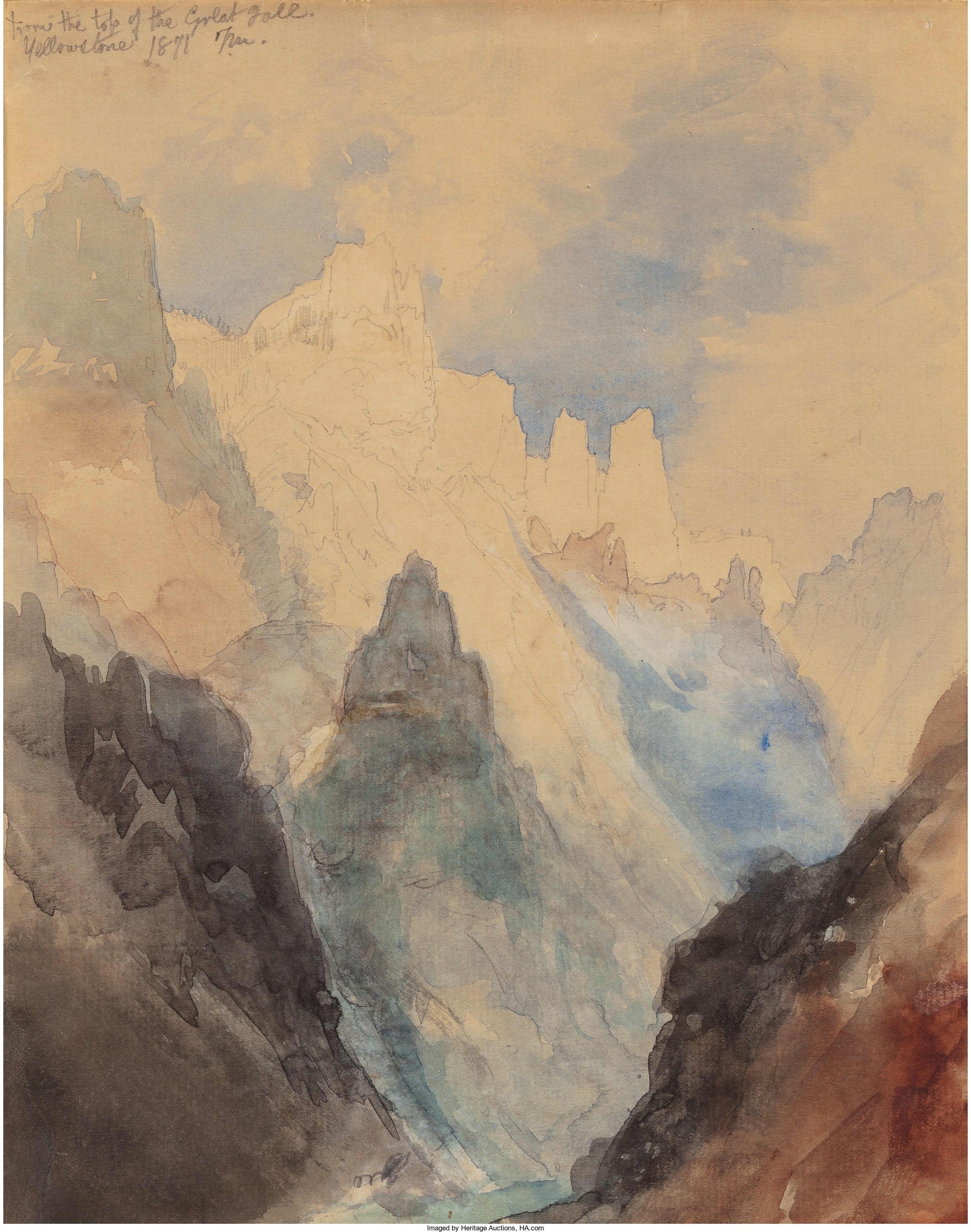
By Jim O’Neal
In March 1872, a tract of land beneath the headwaters of the Yellowstone River became a national park when the U.S. Congress passed an act to authorize it and President Ulysses S. Grant approved it.
A great deal of the credit belongs to two 19th-century artists: Thomas Moran (amazing color sketches and paintings) and William Henry Jackson (brilliant photographs). They provided the real impetus to convince Congress to set aside 2.2 million acres of Wyoming, Montana and Idaho wilderness as the first national park in the United States (and probably the world).
Because Congress had a chance to see Moran’s and Jackson’s breathtaking pictures, America got Yellowstone National Park.
Before the artists’ work became widely known, little reliable proof was available to support the fanciful reports that had been trickling back East. They had started shortly after the famous Lewis and Clark journey had ended in 1806 after an epic three-year discovery which did NOT include any of the Yellowstone area.
However, there were numerous eyewitness reports from trappers and mountain men who described a strange landscape filled with boiling springs, towering geysers and foul-spelling vapors. One prominent fur trader, Warren Angus Ferris, wrote: “The largest of these wonderful fountains projects water several feet in diameter to the height of more than 150 feet.” But without images to support these claims, they were generally considered exaggerated and only partially credible.
As an aside, there was also a plain within Yellowstone called Two-Ocean Plateau, from which creeks trickled into streams that eventually passed to both the Atlantic and Pacific Oceans. The result was that Yellowstone’s melting snow peaks watered great swaths of American land. Yet none of those passing on the Oregon Trail came close enough to see it. Neither did the hardy Mormon pioneers who were heading for the valley where they would build Salt Lake City.
Even those heading for the Montana gold fields turned away at the sight of the seemingly impenetrable-looking mountains. All of them balked at the high passes that were still choked with snow in late June. So all the contemporary maps marked Yellowstone as “unexplored” and “terra incognita” or did not bother to mention it at all.
In 1860, it was probably the final important place in all of America to be so little-known.
However, by 1870, the Montana Territory was becoming populated as gold and silver were discovered. Towns were built and unknown corners of the territory were being explored. One group even headed up the Yellowstone River and what they discovered over the next six weeks was almost beyond belief. One member, Nathaniel Langford, wrote two essays for Scribner’s Magazine. They told of truly amazing things: hundred-foot geysers, enormous waterfalls, bubbling hot springs, wild-flowered meadows and towering snowcapped volcanoes.
It was the formal crowning for Yellowstone and was followed by the Ferdinand Hayden expedition, which took along Thomas Moran, the very artist who had drawn the magnificently imagined Scribner’s pictures. What he drew and painted that year and what Hayden found on his expedition put in motion a series of activities that would have lasting consequences for America’s perception of the glories of her countryside.
The 2.2 million acres exceeded the size of both Rhode Island and Delaware, and almost 5 million visitors now visit annually to see one of our country’s true national treasures.
 Intelligent Collector blogger JIM O’NEAL is an avid collector and history buff. He is president and CEO of Frito-Lay International [retired] and earlier served as chairman and CEO of PepsiCo Restaurants International [KFC Pizza Hut and Taco Bell].
Intelligent Collector blogger JIM O’NEAL is an avid collector and history buff. He is president and CEO of Frito-Lay International [retired] and earlier served as chairman and CEO of PepsiCo Restaurants International [KFC Pizza Hut and Taco Bell].
